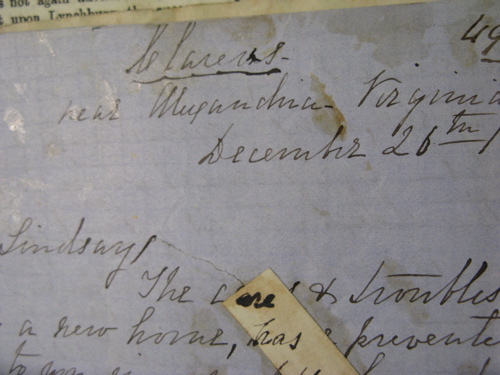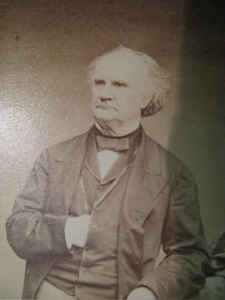In 1857 Harriet Martineau, one of the most prolific and influential political economists in Great Britain, turned her attention to the influence of railroads on nations and their development. Railroads constituted one of the most important developments of the time as they soaked up capital, labor, and resources. She considered the vast railroads underway in the United States, Russia, France, Germany, and Great Britain to be indicators of the societies in which they were built and operate. The railroads mirrored the values of each society.
Impressed with the massive projects underway in the United States, such as the Illinois Central Railroad, Martineau thought Europe’s political and commercial leaders should look at the “political and social consequences of the laying open of the diverse regions of the great continent” of the U.S. as an example. The American railroad scene, she thought, would “suggest to us Europeans a new aspect of railways, which certainly was never dreamed of when they were projected, and which does not seem to be duly considered even now.” Indeed, Martineau argued, “It would be useful to us to consider railways, both philosophically and economically, as exponents of the social systems under which they arise, and are intended to work.”
Because Martineau lived for two years in South Carolina during the nullification crisis of 1832, went on several American tours in the 1850s, and was a leading expert on political economy, she possessed unusual authority on American affairs. She wrote over 1,600 articles for the London Daily News on American developments in these years, and many others as the European correspondent for the New York Anti Slavery Standard. She maintained significant trans-Atlantic associations. A Garrisonian abolitionist, she corresponded with Maria Weston Chapman, Charles Sumner, and William Lloyd Garrison.
Martineau compared the “republican railway” in the U.S. with the “autocratically or constitutionally governed country” in Russia. She saw American railroads as locally managed, built, and controlled, a virtue that represented the republican nature of their origins. The U.S. railroads were unlike the rest of the world’s because most of the roads were not made with the intention to profit in dividends but instead to develop the surrounding areas. The developmental nature of American railroads stood in stark contrast, Martineau wrote, to the English system which was overbuilt with “needless lines” along major routes and with little concern for local development.
Martineau’s concept of railroads as representations of the moral, social, and political world had wide significance. She articulated what many felt–that the huge investment in railroads would extend and support other aspects of the socities that produced them. In the American South, this idea implied that railroads could enable slavery. An edited collection of Martineau’s voluminous correspondence has just been published and in its four volumes we can see just how widely influential Martineau was in her times–Deborah Anna Logan’s The Collected Letters of Harriet Martineau (London: Pickering and Chatto, 2007).
A few years later when the U.S. split into warring sections, the events of the war pushed to the side theoretical discussions about railroad development and Martineau found herself translating American views to her British political associates. Martineau viewed the American Civil War as the culminating event for slavery in what she called the “martyr age” of the United States.
Martineau commented on every aspect of the Civil War, but she became especially active during the Trent Affair. Martineau knew Wilkes personally and had introduced him to the Admiralty in 1836. Neither a filibustering pro-Southerner nor a coward, Wilkes was, she explained to her British friends, “ignorant & wrong headed, & has been in hot water 100 times before.” She used her London Daily News editorials to downplay the warmongering rhetoric over the Trent and explain the North as a society in chrysalis stage, awakening to its rights and responsibilities once free of the “Slave Power.”
Unitarian in her beliefs, and consistent in her abolitionism, Martineau had great expectations for the American war. Diagnosed with a fatal malady in the 1850s, she removed herself from London society and conducted almost all of her work from her country home in the Lake District. With her niece by her side, Harriet Martineau defied her medical prognosis and lived for another twenty years. She received guests continually as her health allowed, including among others her friend Richard Cobden, the free-trade Liberal M.P., and William H. Seward, the U.S. Secretary of State.
Well before the 1860 presidential election, Martineau had determined that America would enter a period of conflict and renewal. The coming struggle, she thought, would be led by American women, especially Maria W. Chapman, whom she considered the “greatest woman . . . on record” whose name “will by and by stand beside Washington’s in history, as the deliverer of her country the second & greater time.” She wanted to shape American and British public opinion about the war. To do so she had to explain the English view of the war to her antislavery American correspondents and the American view of the war to her British editors and literary friends. Martineau held out great hope for the war to cleanse and “regenerate,” as she put it, American society.
When her friend Florence Nightengale expressed profound dismay at the outbreak of war in the United States, Martineau replied that she was “anything but unhappy” because it portended “the resurrection of conscience,” and what she called “the renewal of the soul of the genuine nation.” She welcomed the “destruction” which she thought would “overtake the wicked.”
Martineau was convinced in April 1861 that the South would collapse quickly and that the Confederacy could never sustain a war against the North. “I much doubt whether there will be a war,” she explained to her editor Henry Reeve. Once “pressed” the South could not stand. To those in Britain who considered the Southern Confederacy an embryo nation, such as her rival editors at The Times, Martineau scoffed at “slap-bang ignorance” that pervaded reporting on America. The “charming notion of a triumphant Southern Confederation” offended her. From the beginning of the conflict she greatly underestimated the South’s capacity and will for war, seeing divisions along class lines as the Achilles heel of the South’s slavery-based society. Unconcerned with servile insurrections or other nightmare scenarios that frightened August Belmont and even haunted Richard Cobden, Martineau disparaged the “mean whites” of the South whom she thought “barbaric & corrupt” and, as she explained to Florence Nightingale, the “very lowest specimen of the white race, –almost of the human race.” These men could hardly be classified as citizens, she believed, and would never serve consistently and admirably as soldiers in war.
However misguided her reading of Southern white society as divided, ineffective, and afflicted with “utter helplessness,” Martineau was unusual in her total and complete certainty that slavery would perish with the war. Rather than the sentimental abolitionism of Harriet Beecher Stowe, Martineau adopted a realistic assessment of the war. The old union with its compromises to accommodate slaveholders was not only dissolved but also gone and never to return. The war would regenerate and replace the flawed, old compact with one free of slavery. In this way the North would slough off its long, twisted complicity in Southern slavery and stand before the world in the vanguard of civilized nations. Attempting to persuade her conservative editor, Henry Reeve, she explained her efforts to make others see this truth: “My business now, on both sides the water, is to hold up the fact that the struggle has become altogether revolutionary.” Emancipation was “inevitable.” To explain why more Britons did not see this simple fact, she reminded Charles Sumner that “ninety-nine in a hundred [American commentators] insist, loudly & persistently that the war is not for the abolition of slavery; & that it is fully intended not to abolish it.”
When the prospect of English recognition of the Confederacy developed in the summer of 1862, Martineau detected a change in British views on the American war. No longer quite as sanguine, she had become “sick at heart” over the violence, but she also saw that the Americans did not feel the same way. “Between the virtuous glow of patriotism in some, & the delight in excitement in others, & the intoxication of passion in a multitude,” she explained to her editor after the Battle of Shiloh, “they do not seem to suffer as we do. They are evidently unconscious of the singular horribleness of the conflict.”
Martineau perceived the American willingness to slaughter one another and tolerate high casualties as evidence of the national purposes at stake, and while Europeans shrank from the bloodletting she embraced it as a necessary step in the end of slavery. She thought that the Emancipation Proclamation was a turning point, slowly adjusting British views on the American war. By December the change was faint but discernable. She reported “a reviving Anti-slavery feeling, disbelief in the South, & more respect for the North.” To Florence Nightingale she summarized the shifting ground: “The proper English antislavery feeling is reviving; & people begin to see now how little the South is worth, — that it can’t fulfill its boasts, –that it is hopelessly divided on the very question of State Rights, –& that there is no society there really civilized in its organization; while there is no question of Slavery being irretrievably doomed.”
For Harriet Martineau the Emancipation Proclamation redeemed Northern society and gave vindication to over twenty years of moral reform efforts. “The thing that I & my political & private friends there care about is secure,” she explained to a British friend in the summer of 1863, “–the repentance & amendment of the Free States after their long & unworthy submission to the domination of violence & wrong.” The long walk of the North in moral darkness because of its complicity with slavery had ended, and the liberation of the North prompted Martineau to explain to her editor that “it was always the whites that I cared most about.”
Martineau was one of the leading anti-slavery advocates of her day, and she considered the South, despite its extensive railroad system, a civilization not worthy of consideration because of slavery. Its railroads, build by slaves, did not resemble the republican-oriented developmental railroads such as the Illinois Central. But her statement to her editor that she cared about moral position of the whites in the North than the injustices of slavery for blacks in the South reveals the contradictions that swirled through the American Civil War. Martineau’s letters reveal her as a determined advocate and a passionate and astute opinion maker. She recognized several important truths at the heart of the American conflict, and at the same time she missed others.

